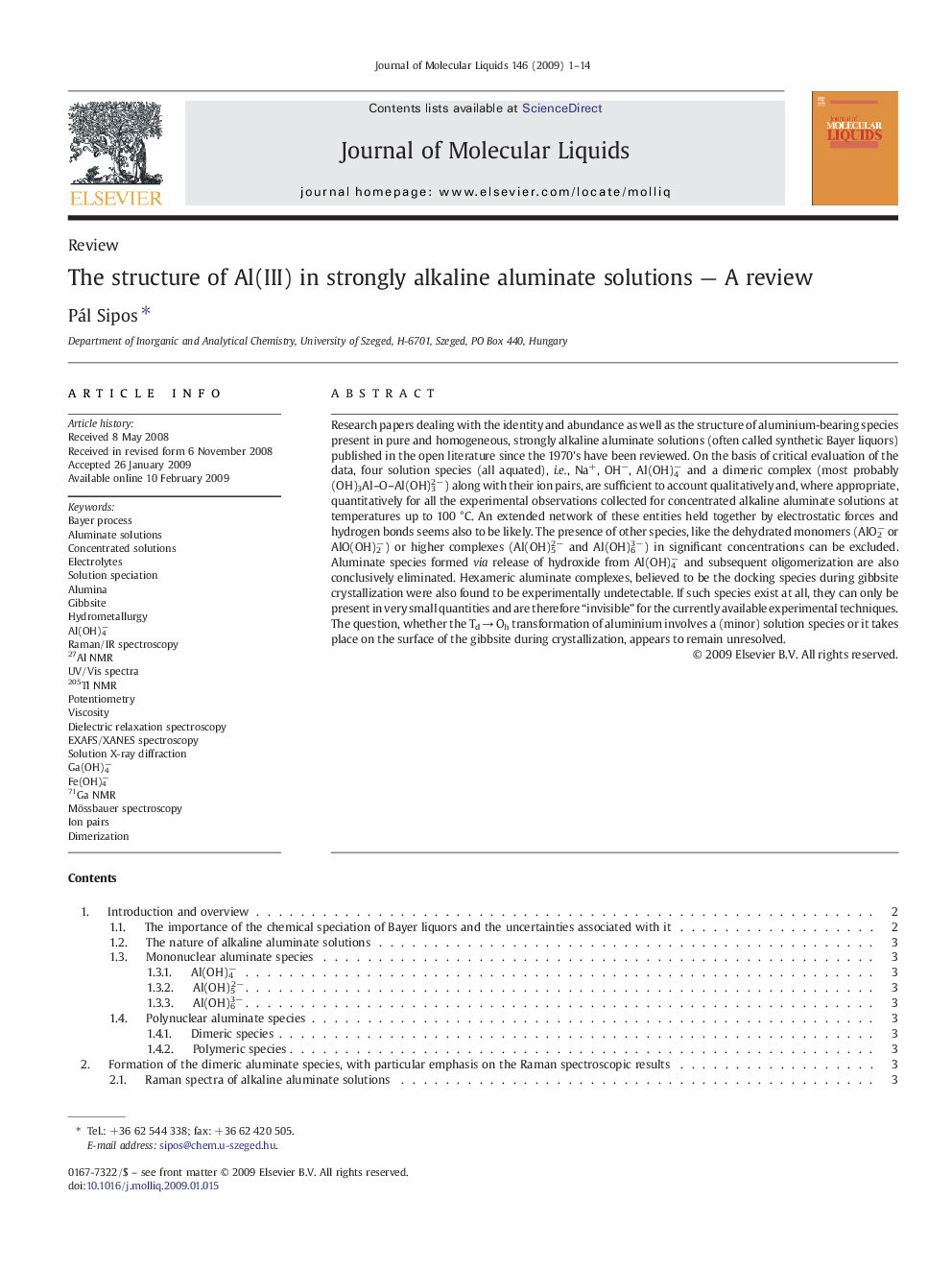| Article ID | Journal | Published Year | Pages | File Type |
|---|---|---|---|---|
| 5413123 | Journal of Molecular Liquids | 2009 | 14 Pages |
Abstract
Research papers dealing with the identity and abundance as well as the structure of aluminium-bearing species present in pure and homogeneous, strongly alkaline aluminate solutions (often called synthetic Bayer liquors) published in the open literature since the 1970's have been reviewed. On the basis of critical evaluation of the data, four solution species (all aquated), i.e., Na+, OHâ, Al(OH)4â and a dimeric complex (most probably (OH)3Al-O-Al(OH)32â) along with their ion pairs, are sufficient to account qualitatively and, where appropriate, quantitatively for all the experimental observations collected for concentrated alkaline aluminate solutions at temperatures up to 100 °C. An extended network of these entities held together by electrostatic forces and hydrogen bonds seems also to be likely. The presence of other species, like the dehydrated monomers (AlO2â or AlO(OH)2â) or higher complexes (Al(OH)52â and Al(OH)63â) in significant concentrations can be excluded. Aluminate species formed via release of hydroxide from Al(OH)4â and subsequent oligomerization are also conclusively eliminated. Hexameric aluminate complexes, believed to be the docking species during gibbsite crystallization were also found to be experimentally undetectable. If such species exist at all, they can only be present in very small quantities and are therefore “invisible” for the currently available experimental techniques. The question, whether the Td â Oh transformation of aluminium involves a (minor) solution species or it takes place on the surface of the gibbsite during crystallization, appears to remain unresolved.
Keywords
Related Topics
Physical Sciences and Engineering
Chemistry
Physical and Theoretical Chemistry
Authors
Pál Sipos,
